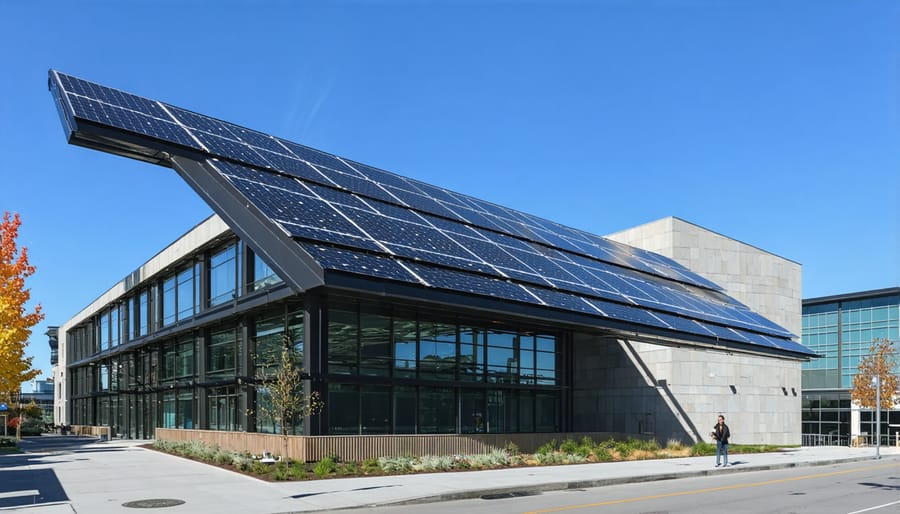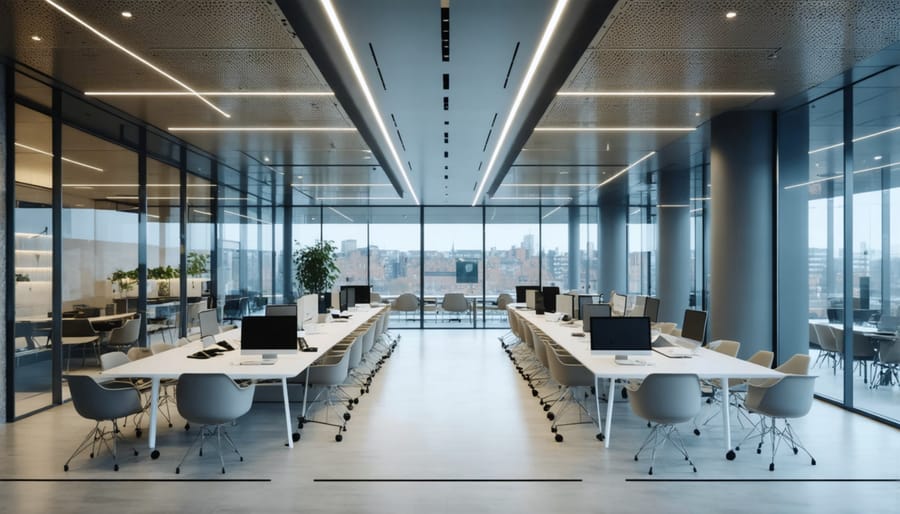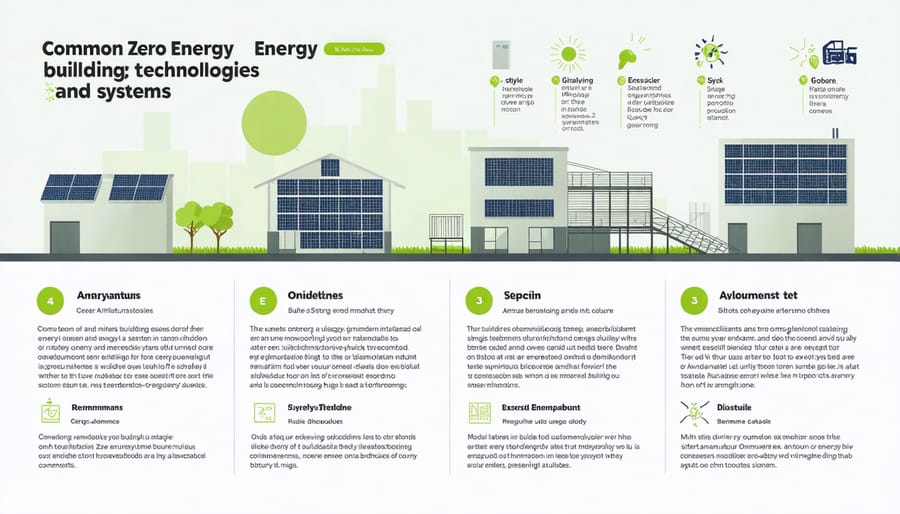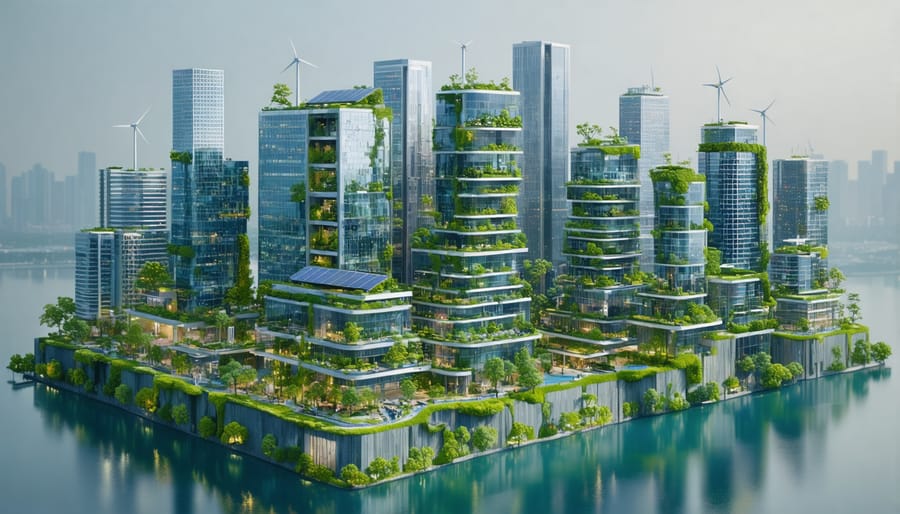As zero energy buildings transform from ambitious concepts into operational realities, groundbreaking projects worldwide demonstrate the remarkable feasibility of achieving net-zero energy consumption in modern construction. From the NREL Research Support Facility in Colorado, which generates 15% more energy than it uses through sophisticated solar arrays and thermal labyrinth systems, to the Bullitt Center in Seattle that achieved net-zero certification while operating as a six-story commercial building, these exemplary structures prove that energy independence is achievable across diverse architectural contexts. This comprehensive analysis examines five pioneering zero-energy buildings, dissecting their innovative technologies, documenting their performance metrics, and revealing the cost-benefit calculations that made these projects not just environmentally sustainable but economically viable. By studying these successful implementations, construction professionals can identify proven strategies, avoid common pitfalls, and accelerate their own path toward creating high-performance, energy-neutral buildings that meet increasingly stringent sustainability requirements.

The Bullitt Center: Setting New Standards in Commercial Zero Energy
Key Technologies and Systems
Zero energy buildings rely on a sophisticated integration of advanced technologies to achieve their net-zero energy goals. At the core of these structures are solar power generation systems, typically incorporating high-efficiency photovoltaic arrays strategically positioned to maximize solar exposure and energy production. These systems are often complemented by advanced energy storage solutions, enabling buildings to maintain power consistency during non-peak generation hours.
Geothermal heat pump systems represent another crucial technology, utilizing the earth’s consistent underground temperatures for efficient heating and cooling. These systems can reduce HVAC energy consumption by up to 50% compared to conventional systems. Advanced water management technologies, including rainwater harvesting systems and greywater recycling, play vital roles in reducing overall energy demands while promoting water conservation.
Building automation systems (BAS) tie these components together, utilizing smart sensors and controls to optimize performance. These systems continuously monitor and adjust building operations based on occupancy patterns, weather conditions, and energy demand, ensuring maximum efficiency while maintaining optimal comfort levels for occupants.
Performance Metrics
Real-world performance data from exemplary zero energy buildings demonstrates remarkable achievements in energy efficiency and generation. The Bullitt Center in Seattle consistently produces 60% more energy than it consumes annually, generating approximately 230,000 kWh while using only 147,000 kWh. This surplus allows the building to maintain its net-positive energy status even during cloudy Pacific Northwest winters.
The National Renewable Energy Laboratory (NREL) Research Support Facility achieves an impressive energy use intensity (EUI) of 35 kBtu/ft²/year, compared to the national average of 88 kBtu/ft²/year for office buildings. Its 2.5MW photovoltaic system produces 3.4 million kWh annually, exceeding its total energy requirements.
In the residential sector, the West Berkeley Library demonstrates exceptional performance with an actual EUI of 21.4 kBtu/ft²/year, representing an 82% reduction from the national median for public libraries. Its 117kW solar array generates approximately 180,000 kWh annually, offsetting 100% of the building’s energy consumption while providing a small surplus to the grid.
These metrics validate the feasibility of zero energy design strategies across different building types and climate zones, providing concrete evidence for stakeholders considering similar projects.
NREL Research Support Facility: Government Leadership in Action
Design Innovation
Zero energy buildings employ innovative design strategies that seamlessly integrate passive and active systems. Advanced building envelope solutions, including triple-pane windows with low-e coatings and vacuum-insulated panels, minimize thermal transfer while maximizing natural light penetration. Strategic orientation and sophisticated shading devices optimize solar gain control throughout seasonal variations.
Cutting-edge HVAC systems utilize ground-source heat pumps coupled with energy recovery ventilators, achieving exceptional efficiency ratings. Building-integrated photovoltaics (BIPV) serve dual purposes as both power generators and architectural elements, while smart building management systems continuously optimize energy consumption through real-time monitoring and adjustment.
Innovative water management solutions, including greywater recycling and rainwater harvesting, reduce overall energy demand for water heating and treatment. The integration of phase-change materials in building components provides thermal mass benefits, while advanced daylight harvesting systems minimize artificial lighting requirements. These technological solutions work in concert to achieve the net-zero energy goal while maintaining optimal occupant comfort and functionality.
Cost-Effectiveness
Analysis of multiple zero energy building projects reveals compelling financial returns, with typical payback periods ranging from 5 to 15 years. Initial construction costs generally run 5-10% higher than conventional buildings, but operational savings offset this premium. For example, the Bullitt Center in Seattle achieved ROI within 12 years through 60% reduced energy consumption and eliminated utility bills.
Life-cycle cost assessments demonstrate that ZEB investments typically yield 20-30% returns over 30 years when factoring in energy savings, increased property values, and reduced maintenance costs. Government incentives, tax credits, and utility rebates can further improve financial performance. The Unisphere in Philadelphia secured $1.2 million in incentives, reducing payback period by 3 years.
Modern ZEB technologies have become increasingly cost-competitive. Solar PV costs have declined 70% over the past decade, while high-performance building envelopes and smart energy management systems deliver enhanced efficiency at lower implementation costs than earlier generations.
European Excellence: The Edge Building Amsterdam
Smart Building Features
Modern zero energy buildings leverage sophisticated energy management systems and IoT technology to optimize performance and maintain net-zero status. These smart features include occupancy-based lighting controls, automated HVAC adjustments, and real-time energy consumption monitoring. Building automation systems (BAS) integrate with sensors throughout the facility to collect data on temperature, humidity, CO2 levels, and occupancy patterns, enabling predictive maintenance and dynamic energy optimization.
Smart meters and submeters provide granular consumption data, while IoT-enabled devices allow facility managers to remotely monitor and control building systems through centralized dashboards. Machine learning algorithms analyze historical performance data to identify efficiency opportunities and automatically adjust building operations. These integrated systems ensure optimal energy distribution, minimize waste, and maintain occupant comfort while helping buildings achieve and sustain their zero energy goals.

Workplace Innovation
Zero energy buildings significantly enhance workplace functionality through innovative design elements that prioritize both sustainability and employee well-being. Studies show that natural daylighting strategies, commonly employed in zero energy buildings, increase worker productivity by up to 15% while reducing eye strain and fatigue. Advanced ventilation systems with CO2 monitoring ensure optimal air quality, leading to fewer sick days and improved cognitive function.
The integration of smart building management systems allows for precise temperature and lighting control, creating personalized comfort zones that boost employee satisfaction. Biophilic design elements, such as living walls and indoor gardens, not only contribute to energy efficiency but also reduce stress levels and enhance creativity among workers.
Furthermore, open floor plans typical in zero energy buildings facilitate collaboration while utilizing natural light penetration. These designs often incorporate flexible spaces that can be reconfigured based on changing workplace needs, ensuring long-term functionality and adaptability while maintaining energy performance targets.
Residential Success: zHome Development
The zHome development in Issaquah, Washington, stands as a pioneering example of zero energy residential construction at scale. Completed in 2011, this multi-unit townhouse development consists of ten units that consistently achieve net-zero energy performance through a combination of advanced building techniques and innovative energy systems.
The project incorporates ground-source heat pumps, triple-paned windows, and super-insulated building envelopes with R-38 walls and R-60 roofs. Each unit features a 6.4kW photovoltaic array that generates enough electricity to offset the annual energy consumption. The development achieves a 60% reduction in water usage through rainwater harvesting and dual-flush toilets.
Construction costs were approximately 12% higher than conventional building methods, but residents typically save $1,200 annually on utility bills. The development has maintained net-zero performance for over a decade, proving the long-term viability of zero energy residential communities.
Key performance metrics include:
– Energy Use Intensity (EUI): 18.5 kBtu/sf/year
– Annual energy production: 6,000 kWh per unit
– Water consumption reduction: 60% below regional average
– Indoor air quality: 60% better than standard homes
The success of zHome has influenced building codes and sustainability standards throughout the Pacific Northwest, demonstrating that zero energy residential developments can be both technically feasible and financially viable at market scale.
Implementation Strategies and Common Features
Across successful zero energy building projects, several key implementation strategies and features consistently emerge as fundamental to achieving net-zero performance. High-performance building envelopes featuring superior insulation, airtight construction, and strategic window placement form the foundation of these energy efficient design strategies. Triple-pane windows, extensive air sealing, and continuous insulation systems are commonly employed to minimize thermal transfer and reduce heating and cooling demands.
Advanced mechanical systems, particularly ground-source heat pumps and energy recovery ventilation (ERV) systems, are standard features in most exemplary projects. These are typically coupled with smart building management systems that optimize energy use through automated controls and real-time monitoring.
Renewable energy generation, predominantly through rooftop or ground-mounted photovoltaic arrays, is sized to match the building’s reduced energy demands. Many successful projects incorporate battery storage systems to manage peak loads and ensure consistent power supply.
Water conservation measures, including rainwater harvesting and greywater recycling systems, frequently complement energy strategies. LED lighting with occupancy sensors, daylight harvesting systems, and plug load management solutions are also universal features.
The most successful implementations share a holistic approach to design and operation, where passive solar strategies work in concert with active systems. This integration extends to material selection, with many projects utilizing locally sourced, low-embodied energy materials that contribute to overall sustainability goals while maintaining high performance standards.

The growing adoption of zero energy buildings represents a significant shift in construction industry practices, with projections indicating a substantial increase in implementation over the next decade. Market analysis suggests that the global zero energy building sector will exceed $100 billion by 2030, driven by stricter environmental regulations and increasing corporate sustainability commitments.
Industry experts anticipate that technological advancements in building materials, energy storage systems, and smart building management will continue to make zero energy buildings more accessible and cost-effective. The integration of artificial intelligence and machine learning for optimal energy management, combined with improvements in renewable energy efficiency, will further streamline implementation processes.
Recent policy developments across major markets indicate stronger government support through incentives and building codes that favor zero energy construction. This regulatory environment, coupled with declining costs of renewable energy technologies and growing expertise in sustainable construction, positions zero energy buildings to become increasingly mainstream rather than exceptional.
As demonstrated by the successful examples throughout this article, zero energy buildings are proving their viability across diverse climate zones and building types. This momentum suggests that zero energy design principles will likely become standard practice in construction, rather than remaining an aspirational goal.

